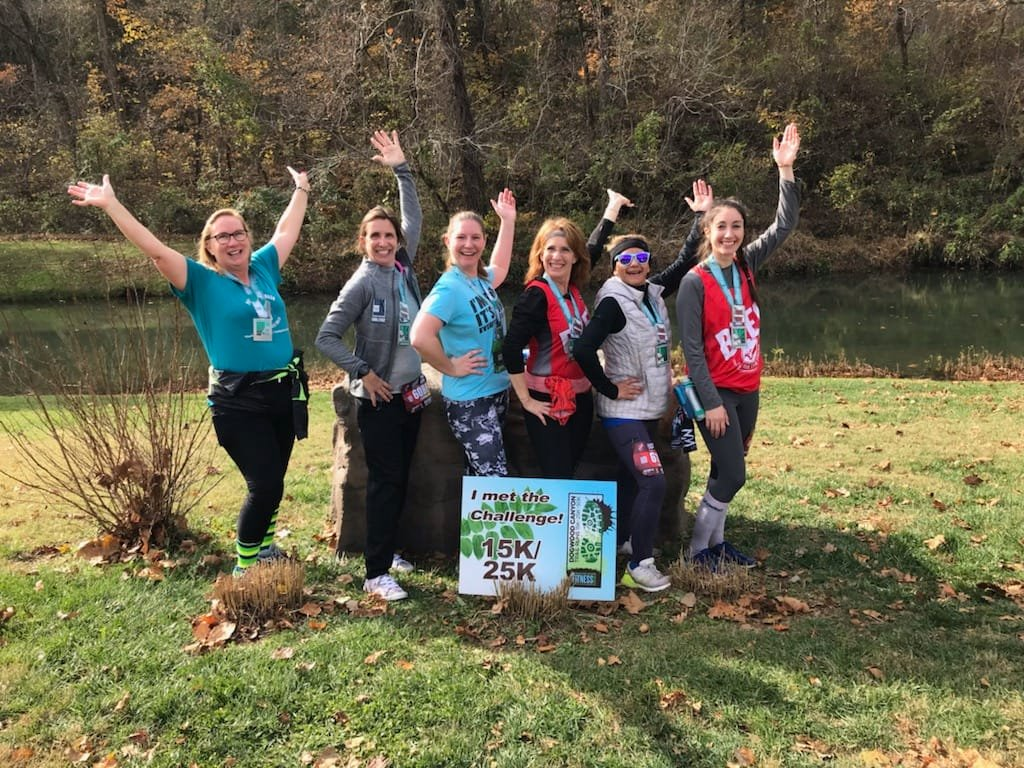Hello runner friends!
Welcome back to the Bass Pro Fitness Series
MIDWEEK M😊TIVATI😊N blog!
Now let's get started by talking about what's happening tomorrow. The first day of summer is happening! Which means the heat and humidity that’s been hit and miss the last few weeks is here to stay, at least until October anyway. Which also means that we have to take
time to become accustomed to the changing weather if we want to survive another Midwest Summer. And you know what we must do during this acclimation period besides hydrate well and pray we don't die? Slow the
pace down.
Now if that has you screaming, "But Melissa, I hate running slow!" let me assure you that there are many benefits for purposely dialing it down a notch, at least for the time period it takes to acclimate. The main one being that it will keep you from being totally frustrated! This was something I was thinking about on Sunday while on my morning run before church. With an 11:00 a.m. service time start, my husband and I slept in an extra hour (as we normally do on Sundays) and got out just as the humidity was really beginning to rise. That hour made all the difference, let me tell you! Despite the effort I made to keep my "normal" pace, it just wasn't happening. But... because, as a longtime runner, I've finally learned to accept that this is the icky, sticky, inevitable start to every summer in the Ozarks, I slowed down, smiled, and then reluctantly "
embraced the suck." And, as a longtime running coach, I've also learned that effective running isn't always done at our fastest paces.
So, in an effort to help you navigate the next few weeks without getting totally frustrated (a little annoyance is to be expected), I've listed
6 benefits of slow running per the experts at Runner's World that I hope will have you smiling despite the balmy temps.
Before we dig into its perks though, let’s first get clear on what constitutes “slow running” which will be different for everyone. Basically, it’s any run in which your heart rate is at or below about 70 percent of your maximum heart rate, South Carolina-based exercise physiologist Heather Hart, C.S.C.S., certified run coach and founder of Hart Strength and Endurance Coaching explained. This is typically considered zone 1 or zone 2 training.
You don’t have to track your heart rate to know if your run meets the criteria for “easy,” though. A simpler method is to tune into your own sense of what feels “easy” and what feels “hard” using the rate of perceived exertion scale (RPE). Imagine a scale of 0 to 10 where zero is no exertion at all and 10 is all-out work—an easy run should fall between a 4 and a 6, says Hart.
Another way to monitor whether you’re striding easy enough: Try holding a conversation. If you’re able to chat without gasping, then you’re likely nailing slow running, Hart says.
“My rule of thumb is that if an athlete [questions] am I running too fast?, then they probably are,” Hart explains. In fact, slow running is probably slower than you think. With that being said, check out these six advantages we can gain by embracing a slow pace:
1. Higher Lactate Threshold
It’s logical to think the only way to get better at running fast is to, well, run fast. But dedicating time to slow running can actually provide a physiological benefit that improves your ability to pick up the pace.
Here’s why: Slow running increases the density of your mitochondria, the little organelles in cells that help metabolize lactate, a byproduct of glycolysis or the process of turning food into fuel for exercise.
There’s an association between the onset of fatigue while exercising and elevated levels of circulating lactate, Janet Hamilton, C.S.C.S., exercise physiologist and coach with Running Strong in Atlanta tells Runner’s World. “That’s known as the lactate threshold,” she says. “You get more lactate production than you have consumption.”
Boosting your mitochondrial density with slow running means you can increase your lactate threshold even during hard efforts, Hart explains. Instead of hitting your lactate threshold (and thus fatiguing out) at, say, a 9-minute mile pace, you may be able to push, say, an 8-minute mile pace. In other words, “you can run faster,” without running out of gas as quickly, Hamilton explains.

2. Reduce Your Chances of Hitting a Wall
While runners rely on fast-twitch muscle fibers for speed work, there’s a subtype of fast-twitch fibers that are somewhat convertible—they can utilize fuel aerobically as well as anaerobically. That means you can strengthen them through high-intensity efforts or by doing long, slow aerobic runs, Hamilton explains.
During a long, slow run, when the slow-twitch fibers start to tire, your body recruits some of the convertible fast-twitch fibers to help out. Do this enough and you are training these fibers to pitch in more reliably. This can help you run longer without getting as fatigued.
Mitochondria also plays a role here, because aside from gobbling up lactate, it metabolizes fat. When running, your body primarily relies on glycogen (the stored form of glucose or sugar) in your muscles for fuel. Because you only have a limited supply of glycogen, that plan works well until it doesn’t. Any runner who has bonked during a distance race knows how awful this crash can feel.
As a backup, though, your body has an almost unlimited supply of intramuscular triglyceride, also known as fat. Training your muscles to more efficiently burn fat for fuel, as you do with long, easy runs, will decrease the likelihood of hitting the wall, Hamilton explains.
Though there are some folks who genuinely love running all out, for a lot of athletes, “speed work is hard,” says Hamilton. Not only can fast running be uncomfortable and demand a lot of focus, it can physically stress your body, she explains. And surprise, surprise: Physical stress can impact your mental health, too, says Hart.
Easy running, by contrast, “is a nice way to let running be a stress reliever instead of a stress producer,” Hamilton says. Indeed, Hart finds that low-intensity workouts provide a chill space where you can simply enjoy running for what it is without worrying about hitting certain paces. “You can stop and smell the roses,” she says.
And if you’re a beginner still trying to build a consistent run routine, finding this type of joy in the activity can make you more likely to stick with it. Case-in-point: A
2015 study involving 41 people concluded that experiencing more positive feelings during a training session improved participants’ adherence to their exercise program.
4. Improved Recovery
Running hard all the time can result in cumulative fatigue, which ultimately affects performance in all your workouts, Hart explains. So regularly slotting slow runs into your schedule can help facilitate recovery and conserve energy so that when it is time for a speed workout, you’re able to run at a high level and hit your target paces. As Hart puts it: “It’s super important to keep those easy days easy so that the hard days can be hard.”
Along those lines, a lot of people don’t realize the adaptations we make from intense training occur during the recovery period following a workout—and not during workouts themselves, Hart explains. By taking it easy after hard and fast runs, you will reap the full gains of those workouts.
5. Decreased Risk of Injury
Fast running places more strain on your feet and lower legs than easy running, and research suggests a link between logging speedy paces—especially when you’re not ready for speed—and potentially higher risk of certain injuries, like plantar fasciitis, Achilles tendinitis, and calf strains. Embracing slow running allows you to increase the percentage of your total weekly mileage while minimizing the amount of stress you’re placing on your body and reducing your overall injury risk, Hart explains.Ultimately, this can translate to better performance. As Hamilton puts it: “The only way to get faster in your races is to train well, and the only way to train well is to stay healthy.”
6. Stronger Mind-Body Connection
Routinely alternating between hard and easy runs will encourage you to tune into your body and its relationship with different exertion levels. And this mindfulness can benefit you in a race scenario, Hart says.
It will give you an understanding of how hard you’re working at a given pace and whether or not you should pick up, slow down, or maintain the pace, she explains. Instead of blindly following a pacing plan that may or may not be right for you on a given day, you’ll be able to adapt in real-time to how your body is actually feeling, thus becoming a more strategic competitor.
So there you have it friends. The start of summer is hard for every runner. But it doesn’t have to leave us frustrated when we remember that the time period it takes to acclimate is short. Knowing that, take the next few weeks to slow down and count your blessings. Is it hot? Yes. Will it get hotter? Of course! But we can still run! Maybe slower for a while, but we are still moving. And for that we should smile and press on! After all, summer training produces fall PRs and the Bass Pro Fitness
Series of events will be here before we know it. Hope that makes you smile!
Happy Running!



















